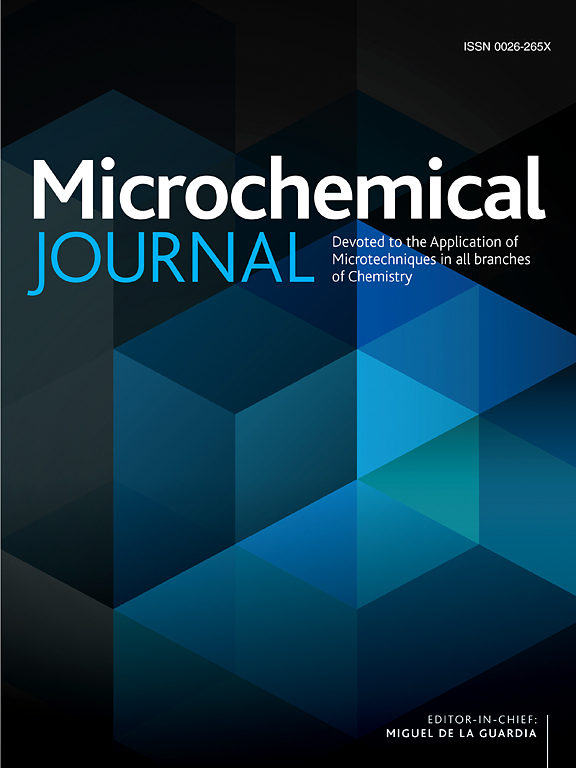Recent advances regarding development of effervescence reaction-assisted microextraction techniques for determination of organic pollutants in complex media
IF 4.9
2区 化学
Q1 CHEMISTRY, ANALYTICAL
引用次数: 0
Abstract
The effervescence reaction-assisted microextraction (EAM) technology can enhance the efficiency of dispersion technology. The in-situ generation of CO2 resulting from the reaction between a CO2 donor and a proton donor forms the basis for the EAM process, effectively dispersing the extractant phase into the sample through the gas produced. After being developed in 2011, EAM technology quickly gained much popularity. Numerous studies have employed it to improve pretreatment procedures. Due to its practical application, low operational cost, reduced solvent usage, excellent extraction efficiency, and environmental friendliness, the EAM technique has garnered significant attention. This article provides a comprehensive overview of the fundamental principles, influencing factors, and methodologies involved in the development of EAM technology in conjunction with large-scale instruments. It specifically focuses on the construction of diverse extractant-based methods for detecting organic pollutants in complex matrices such as environmental samples, food products, and biological specimens. The advantages and disadvantages of these methods are discussed in relation to their practical applications. Furthermore, this review elucidates the effective utilization of this approach for enriching and detecting pollutants within intricate matrices. By conducting a systematic analysis of recent advancements and research cases, this review serves as a valuable reference for advancing environmentally friendly, rapid, and convenient sample pretreatment techniques.

开发用于测定复杂介质中有机污染物的逸出反应辅助微萃取技术的最新进展
激发反应辅助微萃取(EAM)技术可提高分散技术的效率。二氧化碳供体和质子供体反应产生的二氧化碳是EAM工艺的基础,通过产生的气体将萃取剂相有效地分散到样品中。EAM 技术于 2011 年开发成功,并迅速得到广泛应用。许多研究都采用它来改进预处理程序。由于其实用性强、操作成本低、溶剂用量少、萃取效率高、环境友好等特点,EAM技术受到了广泛关注。本文全面概述了结合大型仪器开发 EAM 技术所涉及的基本原理、影响因素和方法。文章特别关注了基于萃取剂的多种方法的构建,以检测复杂基质(如环境样品、食品和生物标本)中的有机污染物。结合实际应用,讨论了这些方法的优缺点。此外,本综述还阐明了如何有效利用这种方法来富集和检测复杂基质中的污染物。通过对最新进展和研究案例进行系统分析,本综述对推进环保、快速、便捷的样品预处理技术具有重要参考价值。
本文章由计算机程序翻译,如有差异,请以英文原文为准。
求助全文
约1分钟内获得全文
求助全文
来源期刊

Microchemical Journal
化学-分析化学
CiteScore
8.70
自引率
8.30%
发文量
1131
审稿时长
1.9 months
期刊介绍:
The Microchemical Journal is a peer reviewed journal devoted to all aspects and phases of analytical chemistry and chemical analysis. The Microchemical Journal publishes articles which are at the forefront of modern analytical chemistry and cover innovations in the techniques to the finest possible limits. This includes fundamental aspects, instrumentation, new developments, innovative and novel methods and applications including environmental and clinical field.
Traditional classical analytical methods such as spectrophotometry and titrimetry as well as established instrumentation methods such as flame and graphite furnace atomic absorption spectrometry, gas chromatography, and modified glassy or carbon electrode electrochemical methods will be considered, provided they show significant improvements and novelty compared to the established methods.
 求助内容:
求助内容: 应助结果提醒方式:
应助结果提醒方式:


